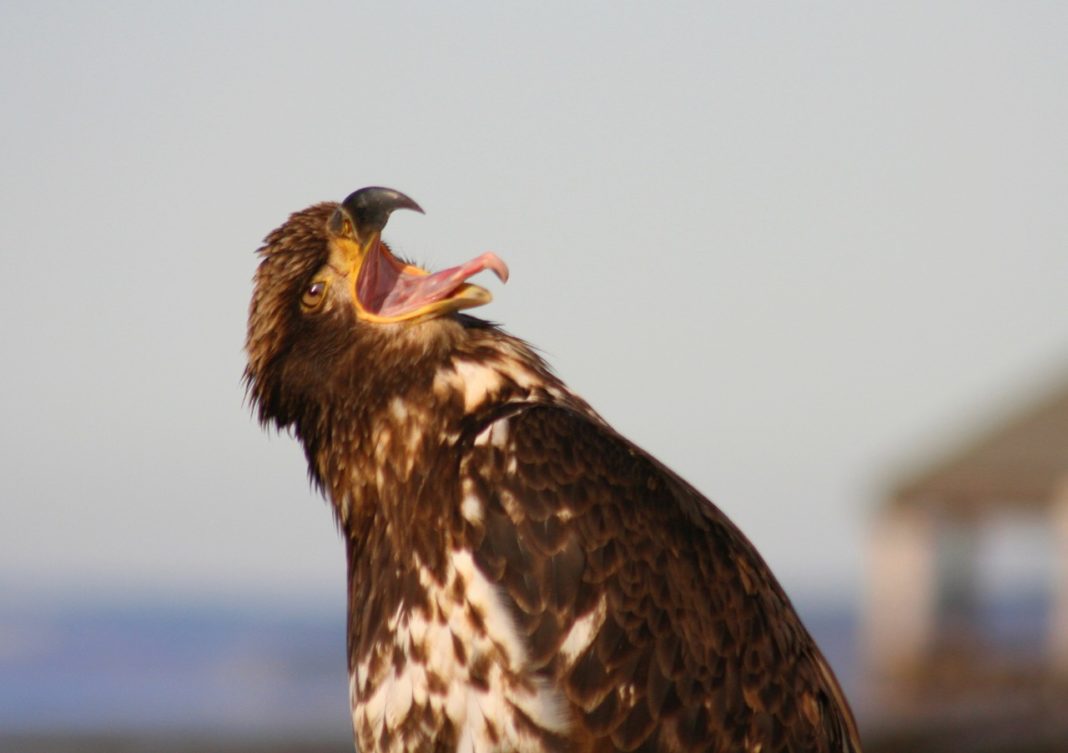On the northern edge of Thurston County, where the Nisqually River mixes with the Puget Sound, one of our region’s natural wonders sits, waiting for you to come back and visit. Now, as winter winds down and spring slowly approaches, it’s a great time to head to the Nisqually National Wildlife Refuge and witness the birding paradise. If you have not experienced Nisqually during this time of the year, you need to drive north on I-5 and see the grandeur firsthand. The Nisqually National Wildlife Refuge offers stunning mountain views, miles of walking trails, and some of the best birding experiences in the Pacific Northwest.
 January, February and March mark a magical time at Nisqually National Wildlife Refuge. While the weather may not always cooperate, enough days with breaks in the rain will occur to allow you to enjoy the five miles of walking trails. Watch the cornucopia of wildlife that migrates to the region each year. Under the shadow of Mount Rainier and the Olympic Mountains in the distance, Nisqually delivers a one-of-a-kind viewing of birds, water, and nature.
January, February and March mark a magical time at Nisqually National Wildlife Refuge. While the weather may not always cooperate, enough days with breaks in the rain will occur to allow you to enjoy the five miles of walking trails. Watch the cornucopia of wildlife that migrates to the region each year. Under the shadow of Mount Rainier and the Olympic Mountains in the distance, Nisqually delivers a one-of-a-kind viewing of birds, water, and nature.
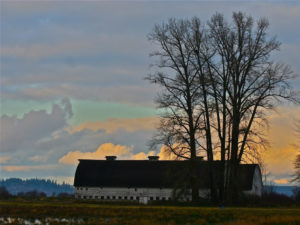
Family-friendly and full of experts hoping to help inspire further trips to the region, the refuge will definitely make your visit worthwhile. Glimpse what life is like for the avian populations of the Pacific Northwest. For beginners your best bet is to attend the Wednesday morning walks. Join birding experts on their weekly trek around the refuge, counting and documenting all the bird species that they see.
At the end of January, the Nisqually Wildlife Refuge, now named after Billy Frank Jr., starts to bustle with activity. The first month of the year gives visitors an amazing opportunity to watch bald eagles forage on chum salmon along Nisqually River and the delta. This can all be seen up-close and personal from the Estuary Boardwalk Trail, which fully re-opens at the end of waterfowl hunting season.
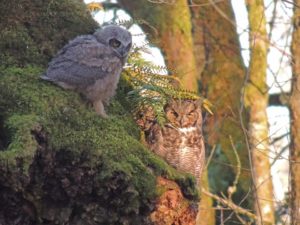
Late January and early February also marks the time when local birders become most excited, scouring the trees in the forested regions, hoping to catch the first glimpse of baby, great horned owls. Birders flock to the area for these owls, watching them through binoculars, taking endless pictures, and basking in their adorable-ness. If you have never seen an owlet, you might just melt at your first glimpse of their fuzzy, gray heads appearing out of an opening of a tree. When looking for and watching the owls, please remember to be as silent and still as possible as they are very sensitive to noise and movement.
February also makes for a great time to see copious amounts of waterfowl and sea ducks along the boardwalk. It is the month when the refuge celebrates its birthday. As the migrating birds fatten up for their travels north, you might even catch a glimpse of peregrine falcons soaring overhead, looking for a delicious meal down below.
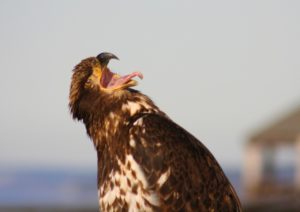
In February, forests and swamps come alive with the sound of tree frogs, chorusing loudly up and down the walkways. As Canadian geese, eagles, and ducks all fly as well as rest around the refuge, deer can be seen eating grass near the barns. Raccoons can also be spotted along the ponds, and blue heron stand stoically, patiently waiting to catch a fish or frog with their long beaks. Walking the boardwalk in February also lets you see the snow-capped peaks of the Olympics and Mount Rainier, which tower over the horizon, sparkling in the late winter sun.
March and April prove to be the pay off to a somewhat lazy February. While the owls are worth numerous trips during the second month of the year, March is when spring migrations return in full force, turning the estuary into a party of wings and feathers. The first flowers also start to bloom, filling the air with a pleasant aroma, bringing in rufus hummingbirds ready to feast on the flowery nectar. As March winds down and the weather starts to stabilize in April, bald eagles start laying eggs in their nests above the Nisqually River. This is the time that the entire estuary becomes a-buzz with over 5,000 western sandpipers and dunlin, all hoping to feed on the delta mudflats as they migrate north. Closer to the barns and ponds at Nisqually, baby ducks and geese start appearing, reminding us that warm weather, long days, and sunny skies are just around the corner.
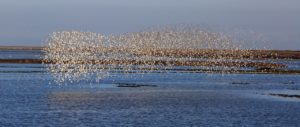
It may seem counterintuitive to head outdoors when the rain starts falling during the late winter and early spring months, but those who do are rewarded with incredible wildlife-watching opportunities. Nisqually National Wildlife Refuge is the perfect destination to spend a post-football season Sunday or a possible location to put in some miles to keep up your New Year’s resolutions. Watching birds and seeing owlets is an added bonus, helping you reconnect with the land we call home and allowing you to gain a better appreciation for just how remarkable and special this area is, not just for us, but for the species of wildlife that live, breed, and travel through our neck of the woods.
Thrifty Thurston highlights inexpensive family fun in Thurston County. The weekly series focuses on family-friendly activities throughout our community. If you have a suggestion for a post, send us a note at submit@thurstontalk.com. For more events and to learn what’s happening in Olympia, Lacey, Tumwater and the surrounding area, visit our complete event calendar.









































